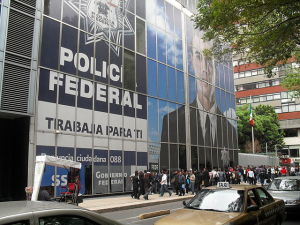Mass Student Disappearance and Police Corruption in Mexico
Over the past several decades, Mexican police forces have been repeatedly labeled as corrupt and ineffective by international commentators. These accusations were confirmed in late September when over forty students were kidnapped in the state of Guerrero. Students from a teacher training college gathered in the town of Iguala to protest alleged discriminatory hiring practices towards rural teachers. The protesters took over three public buses, and were violently restrained by the police. The municipal police response left two students dead and nearly sixty students missing. The following day, however, fourteen students were found, having spent the night in hiding. After the attack, Ángel Aguirre Rivero, governor of Guerrero, released a statement stating that the police involved in the assault were colluding with a drug cartel. This incident occurred concurrently with another gang assault in Guerrero’s capital city Chilpancingo. The conflict between two of Guerrero’s largest cartels, Los Rojos and Guerreros Unidos, saw a bus filled with a high school soccer team attacked, leaving a student and the bus driver dead. The brazenness of the assault, and increasing gang presence in the city has lead some members of the city’s business community to denounce Chilpancingo mayor Mario Moreno Arcos, as a ‘narco-mayor’ and cartel collaborator.

To better understand these issues, it is necessary to delve into the organization and culture of the Mexican police forces. Divided into three primary groups, Mexico’s law are enforced by a federal police force, state and local police forces, and military auxiliary divisions. Following upticks in cartel activity in the late 2000s and early 2010s, police agencies at every level began to shift their primary focus into combating climbing violence rates and cartel influence. This directive has lead to the development of several specially trained divisions, including gendarmeries and retrofitted self-defense forces. The rise of the gendarmeries-young, educated individuals specially trained in quelling violent crime-is part of President Enrique Peña Nieto’s plan to control soaring violent crime rates and police corruption. The self-defense forces germinated from a localist drive in 2013 to combat the Knights Templar, a cartel targeting farmers in the Guerrero, which resulted in residents, many of them farmers, successfully taking up arms against the cartel. In an effort to prevent such groups from moving against the state, the federal government authorized the creation of rural police divisions, drawn from the ranks of the self-defense forces, to operate in their home territories.
The need to rely on former farmers and specially trained forces to combat high violence rates stems from the corruption that has become endemic in the the Mexican police structure. The signs of corruption have manifested themselves in the close ties between the cartels and police forces that push officers into cartel employment. Recently, thirteen federal police officers were arrested for cartel related homicides and kidnappings, unconnected to the student disappearances, in Guerrero, one of the most violent states in Mexico. These revelations have worked to erode support for police agencies throughout Mexico. Combined with low pay, it has become increasingly easier for drug cartels and other gangs to recruit active police officers into their ranks, perpetuating the cycle of mistrust in the integrity of Mexico’s law enforcement agencies. Although Mexican President Enrique Peña Nieto has attempted to combat this problem through expanding the gendarmeries and absorbing the grassroots self-defense forces into local police ranks, problems continue. Many analysts in Mexico have commented that the country does not need more officers, as Mexico currently employs over 500,000, but better trained officers that are paid enough to diminish the allure of moonlighting with the cartels.
The legitimization of the self-defense forces has also had a severe economic impact on several of the small villages the former vigilantes claimed to protect. Following their success in pushing groups such as the Knights Templar out of their territory, the self-defense forces began demanding protection payments. With demands in Guerrero and other poor states exceeding $50,000 a month, the new status quo under the defense forces have left many civilians in a similar state of poverty as under cartel influence. With the integrity of the municipal police forces being called into question after absorbing the vigilantes into their ranks, their impact in reducing violence has been minimal.
The continued instability undermines President Nieto’s goal of projecting Mexico as a safe, stable nation to foreign markets and investors, leaving observers to question the possibility of solving the issue of cartel induced corruption in Mexico’s poorest states.
